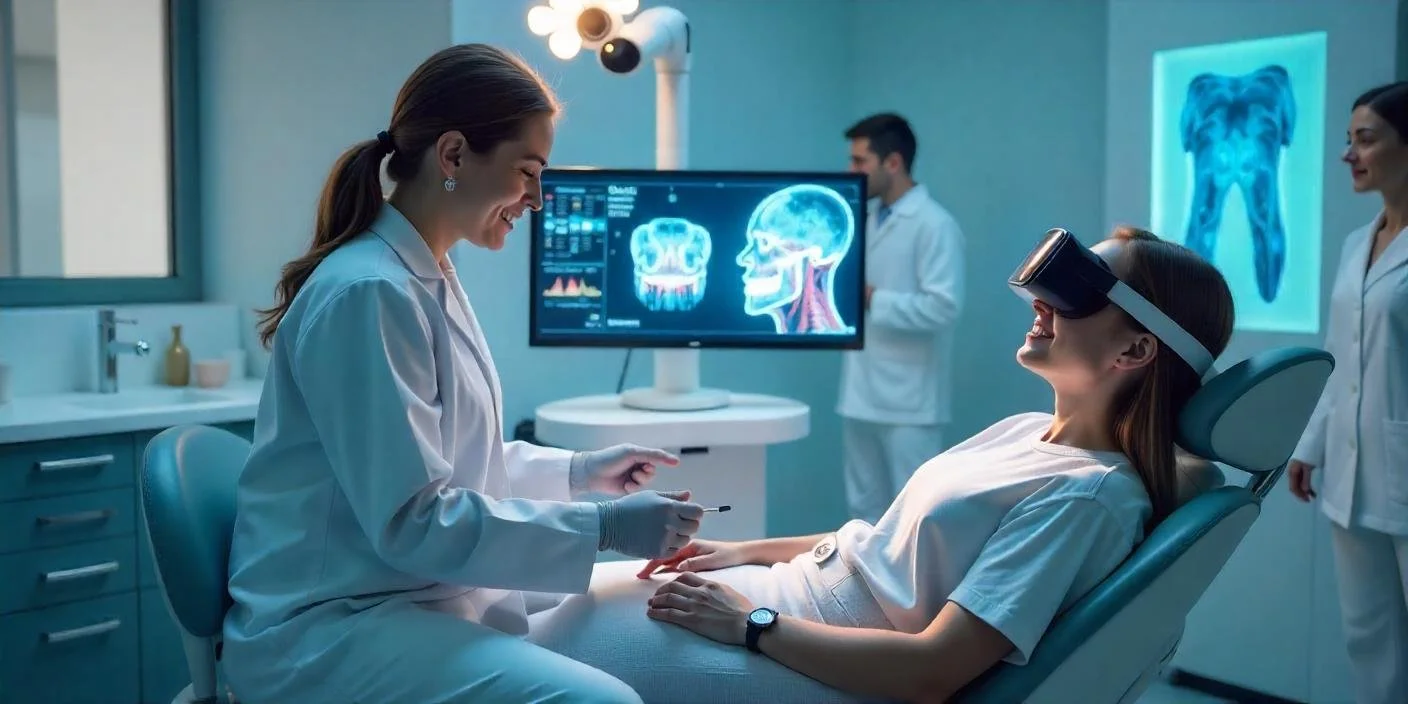The Role of Technology in Modern Dental Care: Advancements for Better Oral Health
Introduction
The dental industry has undergone a significant transformation in recent decades, primarily driven by advancements in technology. These innovations have not only enhanced the accuracy and comfort of treatments but also elevated the overall patient experience. From diagnostics to prevention and restorative procedures, modern dental care is increasingly reliant on tools and systems designed to improve outcomes and efficiency.
This article explores how technology is shaping the future of oral healthcare, highlighting specific advancements, their benefits, and the broader implications for both practitioners and patients. Brands like Cloverdale Dental are at the forefront of integrating these tools, ensuring their patients receive the best care possible.
Digital Imaging and Diagnostics
One of the most impactful changes in dentistry has been the introduction of digital imaging. Traditional x-rays, while effective, have largely been replaced with digital alternatives that offer enhanced clarity and reduced radiation exposure.
Key Benefits:
Faster results: Digital x-rays are available within seconds, enabling prompt diagnosis.
Increased precision: The high-resolution images allow for more accurate identification of cavities, bone loss, and other concerns.
Patient education: These images can be easily viewed and shared with patients, helping them understand their dental health better.
Beyond x-rays, intraoral cameras provide real-time views of the mouth, helping both the dentist and the patient see what’s happening and why treatment might be necessary.
CAD/CAM Technology and Same-Day Restorations
Computer-Aided Design and Computer-Aided Manufacturing (CAD/CAM) have revolutionized the way dental restorations are created. Crowns, bridges, and veneers can now be designed, milled, and placed within a single appointment.
Advantages:
Efficiency: Patients no longer need multiple visits to complete a procedure.
Customization: Precise digital impressions ensure a better fit and more natural look.
Durability: Materials used in CAD/CAM systems are strong and long-lasting.
For patients seeking convenience and reliability, this is a transformative advancement in care delivery.
3D Printing in Dentistry
3D printing is rapidly becoming a standard tool in dental clinics and laboratories. This technology allows for the creation of dental models, surgical guides, dentures, and aligners with unparalleled speed and accuracy.
Applications Include:
Custom orthodontic appliances
Implant surgical guides
Prototypes for crowns and bridges
3D printing reduces wait times and enhances personalization, making dental treatments more accessible and effective.
Laser Dentistry
Laser technology is increasingly used in various dental procedures, from gum reshaping to cavity treatment and whitening.
Benefits of Laser Dentistry:
Minimized discomfort: Lasers reduce the need for anesthesia and minimize bleeding.
Faster healing: With less trauma to tissues, recovery times are often shorter.
Enhanced precision: Lasers allow for targeted treatment, preserving more of the healthy structure.
The minimally invasive nature of laser dentistry makes it particularly suitable for patients who experience dental anxiety or sensitivity.
Teledentistry and Remote Consultations
Teledentistry has emerged as a convenient and valuable service, especially following the global shift toward remote care during the pandemic. Patients can now access dental consultations from the comfort of their homes.
Use Cases:
Initial assessments for non-emergency issues
Post-operative check-ins
Patient education and follow-ups
This digital shift is particularly beneficial for patients in rural areas or those with mobility challenges. Clinics like Cloverdale Dental are adapting to meet these changing needs by incorporating virtual services alongside in-person care.
Smart Toothbrushes and Home Monitoring
Oral hygiene technology has also advanced at the consumer level. Smart toothbrushes now offer real-time feedback via mobile apps to improve brushing techniques and track habits over time.
Features Often Include:
Pressure sensors to avoid aggressive brushing
Timers to ensure thorough cleaning
Personalized reports shared with dental professionals
These devices empower patients to take a more active role in maintaining their oral health between dental visits.
Artificial Intelligence and Predictive Analytics
AI is beginning to shape diagnostic and administrative functions in dental care. Machine learning algorithms can now assist in interpreting x-rays, identifying patterns that may go unnoticed by the human eye.
Other AI Applications:
Scheduling optimization
Predicting treatment needs
Streamlining insurance and billing
Predictive analytics can also forecast potential oral health issues, enabling proactive intervention and minimizing future complications.
Digital Records and Practice Management Systems
Today’s dental clinics rely on comprehensive digital management systems that store patient records, track treatment plans, and streamline communication.
Benefits Include:
Easier data access and sharing
Improved accuracy in treatment planning
Enhanced continuity of care
This digital infrastructure ensures seamless collaboration between general dentists and specialists when needed.
Virtual Reality and Patient Comfort
To reduce anxiety and enhance the in-clinic experience, some dental practices now use virtual reality headsets during procedures. Patients can immerse themselves in calming environments, reducing stress and discomfort.
Applications Include:
Distraction during cleanings or longer procedures
Child-friendly experiences to ease fear
Education about procedures through virtual tours
These tools contribute to a more positive perception of dental care, especially for younger or nervous patients.
Environmental Sustainability Through Technology
Many modern technologies also support eco-conscious practices. Digital impressions eliminate the need for disposable materials, and energy-efficient devices reduce resource consumption.
Examples:
Paperless charting
LED lighting in dental equipment
Water-saving vacuum systems
Sustainable technology reduces the environmental impact of dental practices without compromising care quality.
Education and Communication Through Digital Platforms
Social media, email campaigns, and patient portals are now part of standard communication strategies in modern dentistry. These platforms allow dental clinics to:
Provide oral health tips and reminders
Share post-treatment care instructions
Educate patients on available procedures
Well-informed patients are more likely to engage in preventive care and follow through with treatment recommendations.
Conclusion
Technology has become an integral part of the dental care journey, from diagnostics and treatment to patient communication and education. These innovations improve precision, comfort, efficiency, and accessibility—ultimately leading to better oral health outcomes.
As dental practices continue to adopt and integrate advanced tools, patients benefit from an enhanced experience and a higher standard of care. Clinics like Cloverdale Dental recognize the importance of staying current with technology to provide the best possible services.
Investing in technological advancements ensures a healthier future, one smile at a time.



